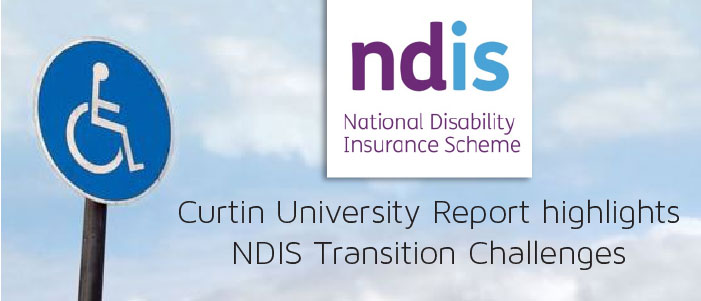A recent Financial Sustainability report from Curtin University’s Not-for-Profit Initiative and National Disability Services Centre for Applied Disability Research highlights the challenges being faced by organisations as they transition to the National Disability Insurance Scheme (NDIS). It was the first component of a two-year study monitoring the impact of the NDIS rollout on service providers.
The report was based on a survey of 180 Disability Service Organisations, with the following mix:
- 4 annual income categories: Very Small ($0 to $1M); Small ($1M to $5M); Medium ($5M to $20M); and Large ($20M and over).
- 8 For-profit and 172 Not-for-profit organisations.
- 53 registered Australian Disability Enterprises, with the remaining identifying as unregistered.
- 9 service groups: Accommodation Support; Community Support; Community Access; Respite; Open Employment; Supported Employment; Advocacy; information and alternative communication; and Other.
The key findings included:
- 16% of organisations have a current asset ratio of below 1%
A current asset ratio under 1% indicates that a company’s liabilities in the next 12 months are greater than its available cash assets. Organisations in this category are at risk should their income decline or expenses increase rapidly.
- 42% of the organisations generated less than 3% profit in their last Financial Year
Providers falling within this profitability band will find it difficult to invest in organisational improvements. To have longevity as a provider under the NDIS, significant and continuing investment will be required in things like: improved IT systems, operational processes, and service delivery; innovation; human resources; and cultural change.
- Over 15% of the organisations recorded a loss in their last Financial Year
Regardless of the funding regime, positive profits are important consideration for organisations operating in a market economy. If these providers do not address loss generation it is likely they will face solvency issues and have difficulty running a sustainable operation under the NDIS.
The above data supports the genuine concerns some have on the ongoing supply of disability services under the NDIS. This is reflected in Curtin University Professor David Gilchrist reaction to the results of the report, “Of major concern is the extent to which the organisations we surveyed hold spare cash or cash equivalents that can be applied to the capital requirements needed to meet rapid change. Change of the magnitude required by many organisations can be an expensive process and, given the impact on those people relying on services, it is imperative that the changing environment be met by an appropriately resourced response”.
If the NDIS is to achieve one of its core objectives of improving the range, quality and quantity of disability services available Professor Gilchrist believes there will need to be a “…strong, efficient and accessible supply of services”. With this, I think most would agree.
In commenting on the research, Professor Gilchrist said “This evidence should help to facilitate the development of policy that fosters a strong, competitive and efficient supply of disability services and supports”. Whether this occurs remains to be seen but I believe that providers will need to invest significantly in organisational improvement to remain sustainable. The challenge will be for Government, the NDIA, DSO’s and supporting stakeholders to collaborate in implementing a realistic and effective plan to ensure this happens.

